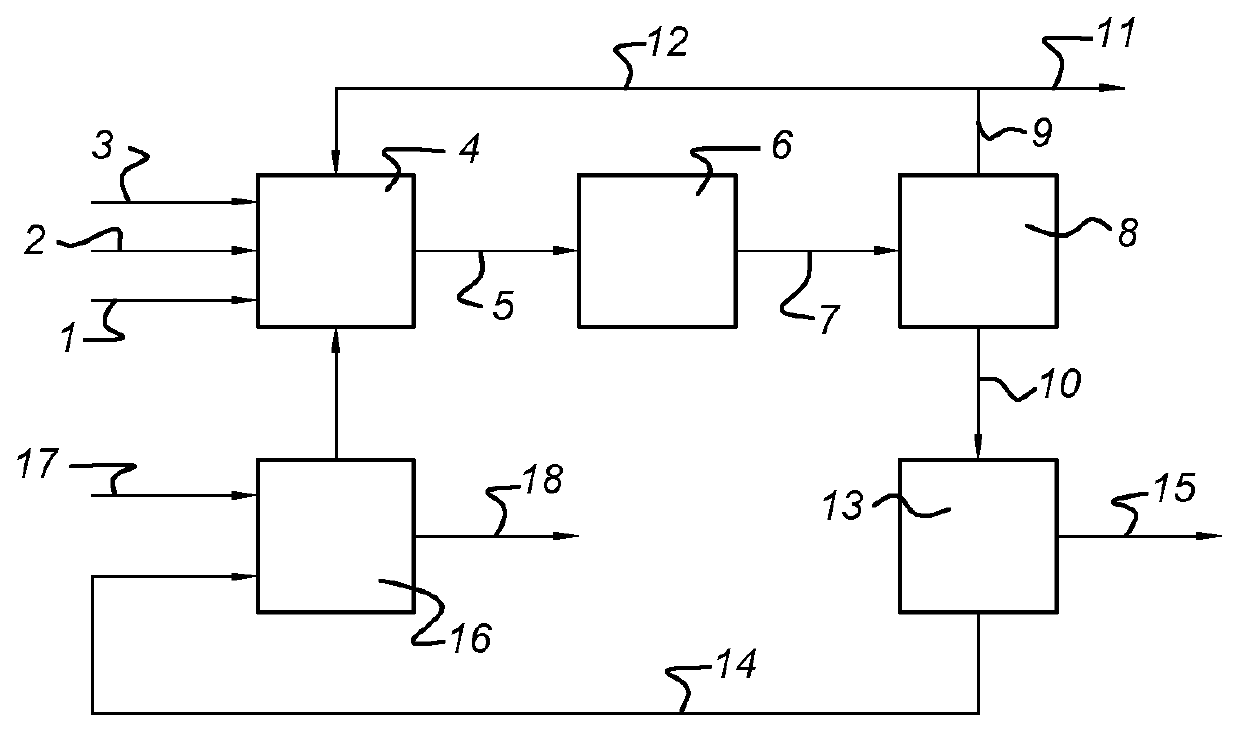Process for the conversion of lignocellulose material into an organic acid
a technology of lignocellulose and organic acid, which is applied in the direction of fermentation, energy input, etc., can solve the problems of relatively low yield of fermentation product, relatively low recovery rate of lactic acid or calcium lactate,
- Summary
- Abstract
- Description
- Claims
- Application Information
AI Technical Summary
Benefits of technology
Problems solved by technology
Method used
Image
Examples
Embodiment Construction
[0018]In the process according to the invention, a feed comprising lignocellulose material is first subjected to an alkaline pretreatment (step a)) and then supplied to a fermentation zone wherein it is subjected to enzymatic hydrolysis and fermentation (step b)). In the fermentation zone, polysaccharides in the lignocellulose material are hydrolysed to obtain fermentable saccharides, which are fermented into one or more organic acids. A fermentation broth is obtained that is discharged from the fermentation zone (step c)) and then separated into a liquid phase and a solid phase (step d)). At least part of the liquid phase is recycled to the alkaline pretreatment step and / or to the fermentation zone (step e)).
[0019]The lignocellulose material may be any biomass material comprising lignocellulose. Examples of suitable lignocellulose material are wood, straw, paper, bagasse, grass, or combinations thereof. Preferably, the lignocellulose material is an agricultural waste material such ...
PUM
| Property | Measurement | Unit |
|---|---|---|
| temperature | aaaaa | aaaaa |
| vol % | aaaaa | aaaaa |
| temperature | aaaaa | aaaaa |
Abstract
Description
Claims
Application Information
 Login to View More
Login to View More - R&D
- Intellectual Property
- Life Sciences
- Materials
- Tech Scout
- Unparalleled Data Quality
- Higher Quality Content
- 60% Fewer Hallucinations
Browse by: Latest US Patents, China's latest patents, Technical Efficacy Thesaurus, Application Domain, Technology Topic, Popular Technical Reports.
© 2025 PatSnap. All rights reserved.Legal|Privacy policy|Modern Slavery Act Transparency Statement|Sitemap|About US| Contact US: help@patsnap.com

